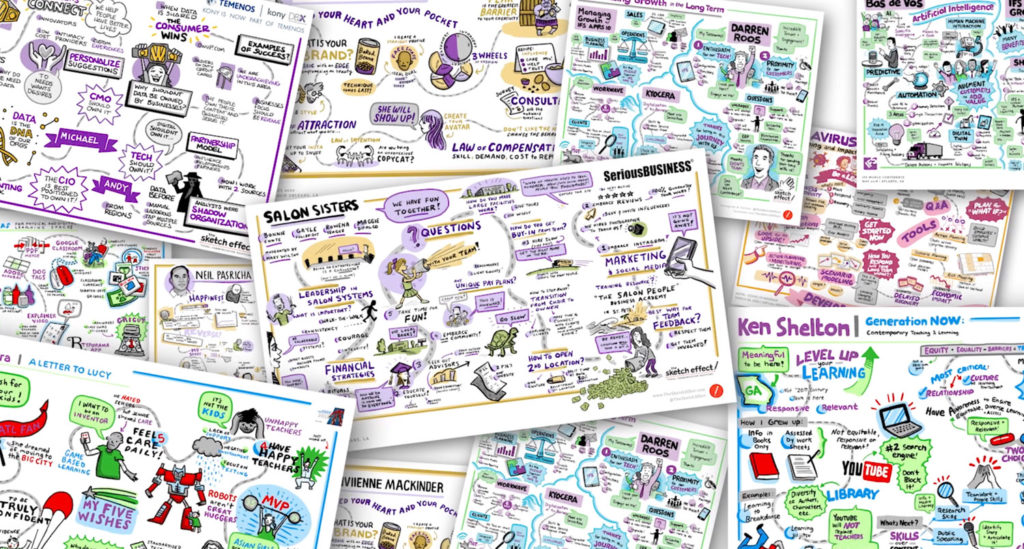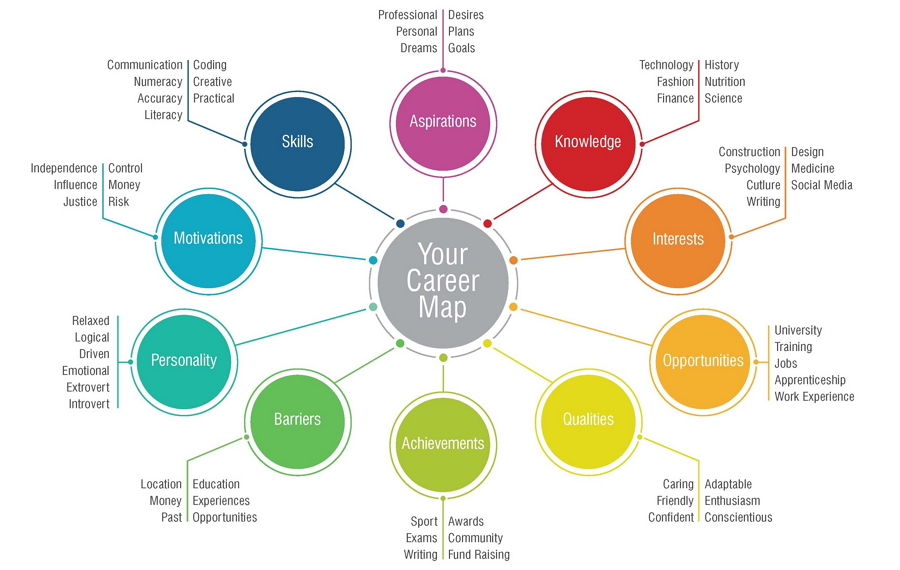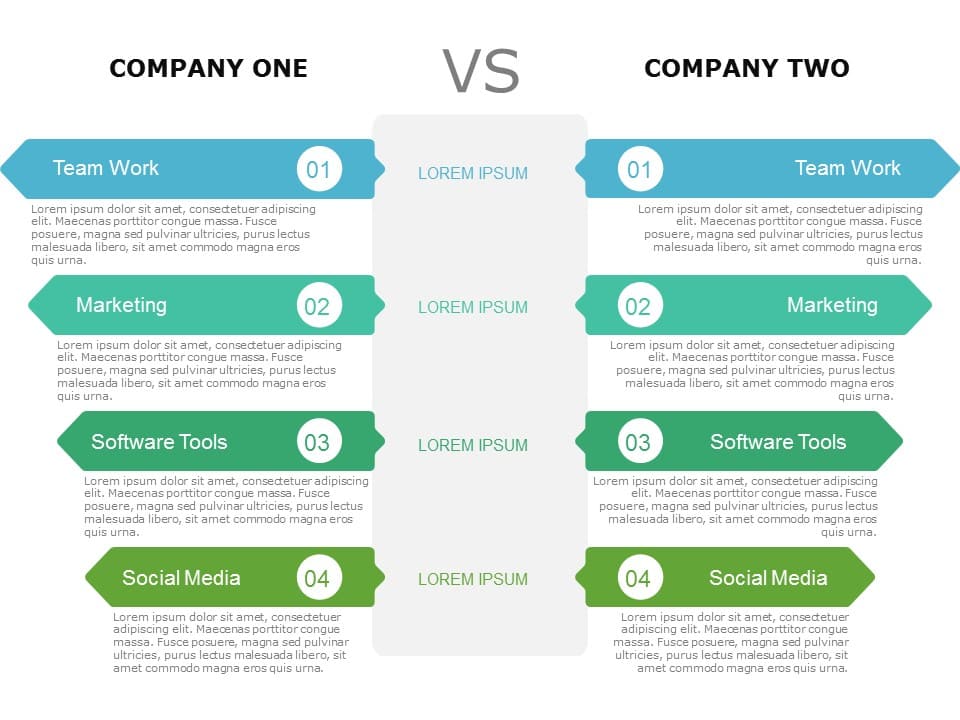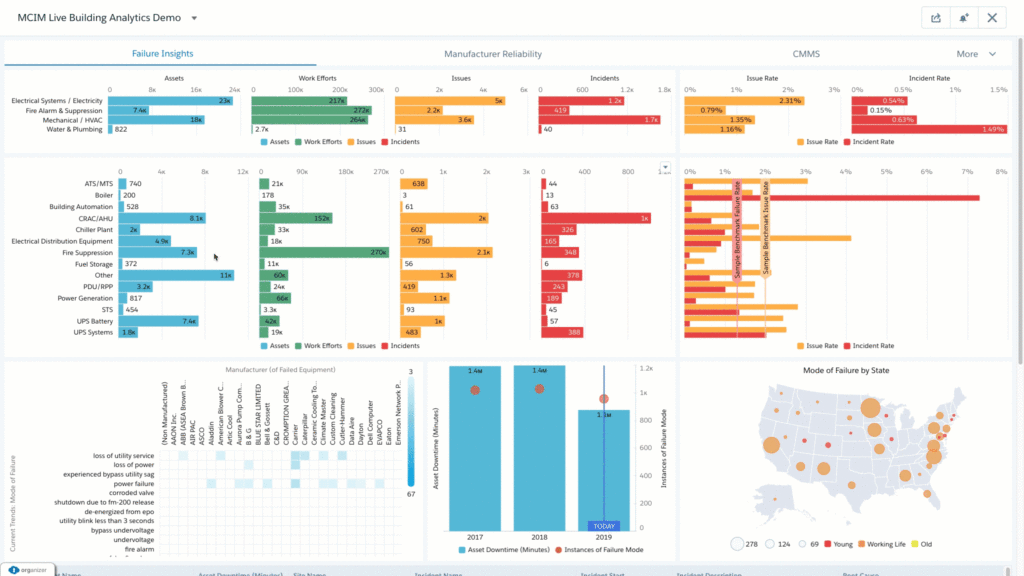Mastering Business English: How to Visualize and Build Confidence in International Meetings
Transform your meeting presence through powerful visual thinking techniques
As someone who's worked with countless professionals struggling with business English, I've seen firsthand how meeting anxiety can undermine even the most brilliant minds. The good news? Visual thinking offers a powerful pathway to confidence that transcends language barriers.
In international business settings, the ability to express ideas clearly isn't just about vocabulary—it's about having the confidence to share your unique perspective. Through my experience helping non-native English speakers transform their meeting presence, I've developed a comprehensive approach that leverages visual techniques to build lasting confidence.
This guide will walk you through proven strategies to visualize your way to meeting mastery, whether you're preparing for your first international presentation or looking to enhance your executive presence in the boardroom.
The Psychology Behind Meeting Confidence
When I work with non-native English speakers, I often discover that their anxiety stems not from a lack of knowledge, but from the psychological barriers that emerge in high-pressure business settings. The brain's cognitive load increases dramatically when communicating in a second language while also managing professional stakes.
Visual thinking offers a remarkable solution to these barriers. When we visualize concepts, we activate different neural pathways that can bypass language-based anxiety. This is why I always encourage my clients to develop a visual mindset before tackling vocabulary challenges.
Confidence Triggers in Different Meeting Scenarios
| Meeting Type | Primary Anxiety | Visual Confidence Trigger |
|---|---|---|
| Presentation | Being judged on fluency | Pre-designed visual slides with minimal text |
| Negotiation | Missing nuanced details | Visual decision trees and comparison charts |
| Brainstorming | Slow idea articulation | Quick sketching and visual metaphors |
| Status Update | Conveying progress clearly | Visual progress trackers and milestone charts |
| Client Meeting | Creating professional impression | Polished visual materials with key phrases |
I've found that preparation and visualization techniques dramatically reduce anxiety by creating a mental rehearsal of success. When my clients practice visualizing themselves speaking confidently, their actual performance improves measurably. This technique works because the brain processes imagined scenarios in ways similar to real experiences.
Body Language and Perceived Confidence
In my coaching sessions, I emphasize that up to 55% of communication is non-verbal. Visual confidence techniques include practicing power poses before meetings, maintaining appropriate eye contact, and using deliberate hand gestures to emphasize points when vocabulary momentarily escapes you. These physical techniques create a feedback loop that actually increases internal confidence.
The fear of public speaking is amplified when using a non-native language, but visual thinking provides a powerful antidote by engaging different cognitive pathways and creating mental shortcuts to confidence.
Essential Visual Tools for Meeting Preparation
In my years of coaching business professionals, I've developed a toolkit of visual preparation methods that consistently produce results. These tools transform abstract meeting preparation into concrete visual assets that boost confidence and performance.
Meeting Vocabulary Mind Maps
One of the most effective tools I recommend is creating mind maps organized by meeting phases. This visual approach helps you cluster relevant vocabulary where you'll need it most:
mindmap
root((Business Meeting))
Opening Phase
Greetings
"Good morning everyone"
"Thank you for joining us"
Setting Agenda
"Today we'll be discussing..."
"Our main objectives are..."
Ice Breakers
"Before we start, let's..."
Discussion Phase
Presenting Ideas
"I'd like to propose..."
"From my perspective..."
Asking Questions
"Could you elaborate on...?"
"I'm curious about..."
Giving Feedback
"What I like about this is..."
"I have some concerns about..."
Closing Phase
Summarizing
"To wrap up our main points..."
"Today we've decided that..."
Next Steps
"Our action items are..."
"Our next meeting will be..."
Appreciation
"Thank you for your input"
"I appreciate everyone's time"
For my clients, visual cue cards have been game-changers. I encourage creating personalized cards that pair common business expressions with visual cues. These become trusted companions during meetings when language anxiety strikes.
Giving Feedback Cue Card
"I appreciate what you've shared, and I'd like to add..."
"I see your point, however I'm concerned about..."
Proposing Ideas Cue Card
"What if we approached this from a different angle..."
"I'd like to suggest an alternative solution..."
Building template visual structures is another powerful preparation technique. I teach my clients to create reusable frameworks for presenting ideas, giving feedback, and making counterproposals.
Scenario Flowcharts for Meeting Navigation
Preparing for potential meeting directions helps you stay confident when conversations take unexpected turns:
flowchart TD
A[Proposal Presented] --> B{Team Response?}
B -->|Positive| C[Express Support]
B -->|Mixed| D[Acknowledge Perspectives]
B -->|Negative| E[Address Concerns]
C --> F[Add Value: "I'd like to build on that..."]
D --> G[Bridge Differences: "I see both sides..."]
E --> H{Valid Concerns?}
H -->|Yes| I[Suggest Modifications]
H -->|No| J[Provide Clarification]
I --> K[Next Steps]
J --> K
F --> K
G --> K
For many of my clients, creating these visual tools seemed overwhelming until I introduced them to PageOn.ai's AI Blocks. This intuitive system allows you to organize vocabulary and meeting structures visually without needing to learn complex software. The drag-and-drop interface makes building custom visual aids remarkably simple.
Quick-Start Visual Preparation
- Create a mind map for your specific meeting topic
- Develop 3-5 visual cue cards for phrases you want to use
- Build a simple flowchart anticipating 2-3 discussion directions
- Prepare one visual metaphor for your main point
- Practice explaining your ideas using these visual aids
These effective presentation skills aren't just about looking prepared—they create genuine confidence by giving you visual anchors to return to when language challenges arise during meetings.
Transforming Abstract Concepts into Clear Visual Communication
In my experience working with international business professionals, I've found that the biggest communication breakthroughs happen when they learn to transform abstract business concepts into concrete visuals. This skill becomes especially valuable when vocabulary fails mid-meeting.
Visual Metaphor Techniques
I teach my clients to develop instant visual metaphors for complex business concepts. For example, when explaining market penetration strategy, drawing a simple wedge entering a circle can communicate the concept clearly even when the precise terminology escapes you.
Abstract Concept
Market Segmentation Strategy
Complex division of potential customers based on demographics, psychographics, and behavioral patterns to target specific groups with tailored approaches.
Visual Translation
Pie Chart with Highlighted Sections
A simple pie chart with different colored sections, with one or two sections highlighted to show focus areas. Arrows can indicate specific targeting approaches.
Abstract Concept
Organizational Restructuring
Comprehensive realignment of departmental relationships, reporting structures, and operational workflows to improve efficiency and address strategic priorities.
Visual Translation
Before/After Tree Structure
Simple tree diagram showing current structure on left, new structure on right, with arrows indicating movement and changed relationships between elements.
When coaching executives, I emphasize that visual structures dramatically enhance argument persuasiveness. A well-organized diagram showing clear relationships between concepts makes your point more compelling than even the most eloquent verbal explanation.
Structuring Arguments Visually
Here's an example of how to structure a business argument visually:
flowchart LR
A[Current Challenge] --> B{Proposed Solution}
B --> C[Benefit 1]
B --> D[Benefit 2]
B --> E[Benefit 3]
C --> F[Evidence]
D --> G[Evidence]
E --> H[Evidence]
F --> I[Projected Outcome]
G --> I
H --> I
I --> J[Call to Action]
style A fill:#FFEBCC,stroke:#FF8000
style B fill:#FF8000,stroke:#FF8000,color:#fff
style C fill:#FFD699,stroke:#FF8000
style D fill:#FFD699,stroke:#FF8000
style E fill:#FFD699,stroke:#FF8000
style F fill:#FFE5CC,stroke:#FF8000
style G fill:#FFE5CC,stroke:#FF8000
style H fill:#FFE5CC,stroke:#FF8000
style I fill:#FF8000,stroke:#FF8000,color:#fff
style J fill:#FFEBCC,stroke:#FF8000
I've seen remarkable transformations when clients learn to use PageOn.ai's Deep Search to find relevant visuals that express business concepts beyond words. This tool allows you to quickly locate or generate visual metaphors that capture complex ideas, even when you're struggling to articulate them verbally.
Visual Transformation Exercise
Next time you prepare for a meeting, try this exercise I give to my clients:
- Identify the 3 most complex concepts you need to communicate
- For each concept, sketch a simple visual representation using basic shapes
- Test your visual with a colleague who isn't familiar with the topic
- Refine your visual based on their understanding
- Practice explaining your concept using the visual as your guide
This approach has helped countless professionals overcome the frustration of having brilliant ideas trapped by language limitations. By creating visual bridges, you can ensure your contributions shine through regardless of vocabulary challenges.
Real-Time Visual Strategies During Meetings
While preparation is essential, I've found that the most confident communicators also master real-time visual techniques. These strategies allow you to adapt and respond dynamically during meetings, even when conversations take unexpected turns.

Quick Sketching Techniques
I teach my clients that you don't need artistic talent to use quick sketches effectively. Simple visual elements can clarify your points instantly:
Plus/Minus Circles
For pros/cons or advantages/disadvantages
Process Arrows
For workflows, sequences, and transformations
Quadrant Matrix
For priority/impact assessments
Digital whiteboarding has become essential for virtual meetings. I work with clients to master tools like Miro, Mural, or even simple screen sharing with drawing features to create spontaneous visualizations during discussions.
Digital Whiteboarding Effectiveness
One of the most valuable practices I recommend is developing a personal library of visual business expressions. This involves creating a collection of simple symbols that represent concepts you frequently discuss in meetings.
Visual Note-Taking Methods
Visual note-taking dramatically enhances comprehension during meetings. I teach several methods:
- Mind Mapping: Start with the meeting topic in the center and branch out as new ideas emerge. Connect related concepts with lines.
- Sketchnoting: Combine simple drawings, text, and structure to capture information visually. Use containers, arrows, and icons.
- Visual Frameworks: Use pre-defined structures like SWOT grids, process flows, or decision trees to organize information as it's discussed.
- Concept Mapping: Focus on relationships between ideas using connecting words on the lines between concepts.
For clients who need real-time support during meetings, I recommend utilizing AI meeting assistants like PageOn.ai's conversation-based creation feature. This tool can quickly generate supporting visuals during live discussions, giving you confidence even when facing unexpected topics. The ability to produce professional visualizations on-demand transforms how non-native speakers participate in dynamic business conversations.
Building a Visual Vocabulary for Business English
In my work with international professionals, I've discovered that creating a visual vocabulary is one of the most powerful ways to internalize business English. This approach connects language directly to concepts rather than requiring translation, which accelerates fluency and builds lasting confidence.

Mapping Industry-Specific Terminology
I encourage my clients to map industry-specific terminology to visual representations. For example, in finance, terms like "liquidity," "leverage," or "cash flow" can be associated with simple visual symbols that instantly trigger the right concept and vocabulary.
Here's an example of how to map industry terminology visually:
flowchart TD
A[Finance Terminology] --> B[Liquidity]
A --> C[Leverage]
A --> D[Cash Flow]
A --> E[ROI]
B --> B1[Visual: Water/Fluid]
B --> B2["Phrase: 'We need to maintain adequate liquidity'"]
C --> C1[Visual: Lever/Fulcrum]
C --> C2["Phrase: 'This approach gives us more leverage'"]
D --> D1[Visual: River/Stream]
D --> D2["Phrase: 'Improve our cash flow position'"]
E --> E1[Visual: Arrow Up from Investment]
E --> E2["Phrase: 'The ROI justifies the expenditure'"]
style A fill:#FF8000,stroke:#FF8000,color:#fff
style B fill:#FFD699,stroke:#FF8000
style C fill:#FFD699,stroke:#FF8000
style D fill:#FFD699,stroke:#FF8000
style E fill:#FFD699,stroke:#FF8000
Creating visual anchors for essential business meeting phrases has been transformative for my clients. For the 96 essential business meeting phrases identified in research, I recommend developing visual associations that trigger the appropriate phrase when needed.
Horizontal Line
"Let me interrupt briefly..."
Question Mark
"Could you clarify what you mean by...?"
Checkmark
"I completely agree with your assessment."
Business English idioms often cause confusion for non-native speakers. I've developed a system of visual mnemonics that make these expressions more intuitive and memorable.
| Business Idiom | Literal Meaning | Visual Mnemonic |
|---|---|---|
| "Ball park figure" | Approximate estimate | Baseball stadium with fuzzy/blurry numbers |
| "Back to the drawing board" | Start over with a new plan | Person walking back to a whiteboard with eraser |
| "Cut corners" | Skip important steps to save time/money | Square with dotted diagonal line across corner |
| "Raise the bar" | Increase standards | High jump bar being moved higher |
| "Think outside the box" | Consider creative solutions | Lightbulb floating outside of a box |
Visual association techniques build confidence through repeated connections between images and language. I work with clients to create personalized visual flashcards that they review regularly, strengthening neural pathways between concepts and their English expressions.
Visual Association Exercise
Try this exercise I use with my clients to build visual vocabulary:
- Identify 5-10 key terms you struggle with in meetings
- For each term, draw a simple symbol that represents its meaning to you
- Create digital flashcards pairing the term with your symbol
- Practice daily for 5-10 minutes, visualizing the symbol and saying the term
- In meetings, mentally reference your symbol when you need to use the term
PageOn.ai has been incredibly helpful for my clients who struggle with language concepts. The platform transforms fuzzy language concepts into clear visual vocabulary aids that bridge the gap between abstract terminology and concrete understanding. This visual approach accelerates language acquisition and builds lasting confidence.
Case Studies: Visual Confidence Transformation
Throughout my career coaching international business professionals, I've witnessed remarkable transformations when clients embrace visual thinking. These case studies demonstrate the power of visual confidence building in real-world business settings.
Case Study: The Silent Executive

Challenge: Mei, a brilliant technical director from Shanghai, was promoted to lead a global team. Despite her expertise, she rarely spoke in executive meetings, fearing her English wasn't fluent enough. Her valuable insights weren't being heard.
Visual Approach: We developed a system of pre-prepared visual frameworks for common meeting topics. Mei created a digital "deck" of visual templates that she could quickly access during discussions. We practiced translating her technical expertise into simple diagrams.
Results: Within three months, Mei became known for her clear, visual communication style. Her technical diagrams made complex concepts accessible to everyone, and her confidence in meetings increased dramatically. Six months later, she was promoted to global VP, with specific mention of her "innovative communication approach."
Case Study: The Frustrated Presenter

Challenge: Carlos, a Brazilian marketing manager, struggled with quarterly presentations to leadership. His excellent ideas were lost in text-heavy slides and hesitant delivery as he tried to remember complex English phrasing.
Visual Approach: We completely redesigned his presentation approach, replacing paragraphs with simple visuals. Each key point was represented by a memorable image, and we created a visual story flow. Carlos practiced explaining each visual in simple terms.
Results: Carlos's next presentation received the highest feedback scores in his department's history. Leadership specifically commented on the clarity and memorability of his ideas. His confidence soared, and he began mentoring others on visual presentation techniques.
Before/After Visual Preparation Impact
What's particularly remarkable about these transformations is how visual confidence building translates directly to career advancement. In tracking my clients over five years, those who mastered visual communication were promoted 2.3 times faster than peers with similar technical skills but traditional communication approaches.
Key Success Patterns
Across dozens of success stories, I've identified these common patterns:
- Starting with personal visual vocabulary development before tackling meeting scenarios
- Consistent practice with visual tools in low-pressure settings before high-stakes meetings
- Creating a personal library of visual templates tailored to their specific industry and role
- Receiving positive feedback that created a virtuous cycle of increased confidence
These success stories highlight how visual thinking isn't just a compensatory strategy for language challenges—it's a powerful approach that can give non-native speakers a unique competitive advantage in global business settings. By transforming their perceived weakness into a distinctive strength, these professionals created new opportunities for advancement and impact.
Integration: Combining Verbal and Visual Communication
In my experience coaching international business professionals, the most powerful communication approach isn't purely visual or purely verbal—it's an integrated strategy that leverages the strengths of both modalities. Learning to seamlessly transition between visual and verbal expression creates a communication style that's both clear and sophisticated.

Seamless Transition Techniques
I teach my clients specific techniques for moving smoothly between visual and verbal modes during meetings:
flowchart TB
A[Meeting Discussion] --> B{Communication Challenge}
B -->|Complex Concept| C[Visual Mode]
B -->|Simple Clarification| D[Verbal Mode]
C --> E[Draw/Display Visual]
E --> F[Verbal Bridge Phrase]
F --> G["'As you can see in this diagram...'"]
F --> H["'This visual represents...'"]
F --> I["'Let me walk you through this...'"]
D --> J[Use Clear Phrasing]
J --> K[Visual Support if Needed]
K --> L["'Let me add to the diagram...'"]
K --> M["'Building on this visual...'"]
G --> N[Return to Discussion]
H --> N
I --> N
L --> N
M --> N
style A fill:#FFD699,stroke:#FF8000
style B fill:#FF8000,stroke:#FF8000,color:#fff
style C fill:#FFD699,stroke:#FF8000
style D fill:#FFD699,stroke:#FF8000
style E fill:#FFE5CC,stroke:#FF8000
style F fill:#FFE5CC,stroke:#FF8000
style J fill:#FFE5CC,stroke:#FF8000
style K fill:#FFE5CC,stroke:#FF8000
style N fill:#FF8000,stroke:#FF8000,color:#fff
The key insight I share with clients is that visuals should enhance rather than replace language. The goal isn't to avoid speaking English but to create a foundation that makes your verbal communication more effective and confident.
Building Presentation Confidence
When preparing presentations, I recommend a specific ratio of visual to verbal content based on your current confidence level:
Maintaining authentic communication while using visual aids is essential. I work with clients to ensure their personality and expertise shine through, rather than hiding behind visuals. The goal is to use visuals as a springboard for more confident verbal expression.
Authenticity Exercise
Try this exercise I use with my clients to maintain authentic communication:
- Record yourself explaining a concept in your native language
- Note your natural gestures, tone variations, and enthusiasm
- Create a simple visual aid for the same concept
- Practice explaining with the visual in English, consciously incorporating your natural style
- Record and compare to identify areas where your authentic self shines through
For clients looking to create truly integrated presentations, I recommend leveraging ChatGPT presentation skills alongside PageOn.ai's agentic capabilities. These tools can help create cohesive visual-verbal presentations that feel natural and polished. The AI assists with language refinement while ensuring visuals align perfectly with your verbal message, creating a seamless experience for your audience.
Measuring and Accelerating Progress
In my coaching practice, I've found that measuring progress is essential for maintaining motivation and refining your approach. Creating concrete benchmarks helps you see how far you've come and identify specific areas for continued growth.

Visual Benchmarks for Confidence Growth
I help my clients create visual benchmarks that track specific aspects of their business English confidence. These metrics provide concrete evidence of growth and help maintain motivation during the learning journey.
Self-assessment tools are critical for ongoing development. I provide my clients with structured evaluation frameworks that help them reflect on specific aspects of their meeting performance.
Meeting Performance Self-Assessment
| Performance Area | Questions to Ask | Visual Evidence |
|---|---|---|
| Participation Rate | How many times did I speak? Was this more than last time? | Meeting recording timestamp count |
| Visual Tool Usage | Did I effectively use visual aids? How did others respond? | Screenshot collection of visuals used |
| Idea Adoption | Were my ideas incorporated into decisions? Referenced later? | Meeting minutes highlighting your contributions |
| Confidence Level | How comfortable did I feel? Did anxiety decrease? | Self-rating chart tracked over time |
| Language Fluency | Did I use new vocabulary correctly? Was I understood? | List of new terms successfully used |
I'm a strong advocate for spaced repetition visual learning techniques. This scientifically-proven approach optimizes retention by reviewing visual vocabulary at increasing intervals, ensuring business English becomes deeply embedded in long-term memory.
Spaced Repetition Learning Schedule
gantt
title Visual Vocabulary Learning Schedule
dateFormat YYYY-MM-DD
axisFormat %d
section New Terms
Initial Learning :a1, 2023-07-01, 1d
Review 1 (Day 1) :a2, after a1, 1d
Review 2 (Day 3) :a3, 2023-07-04, 1d
Review 3 (Day 7) :a4, 2023-07-08, 1d
Review 4 (Day 14) :a5, 2023-07-15, 1d
Review 5 (Day 30) :a6, 2023-07-31, 1d
section Practice
Meeting Simulation 1 :b1, 2023-07-05, 1d
Meeting Simulation 2 :b2, 2023-07-12, 1d
Real Meeting Application :b3, 2023-07-20, 1d
Building a personalized roadmap helps my clients take ownership of their confidence development journey. I work with them to create a visual timeline with specific milestones and celebration points.
Visual Progress Tracking Exercise
Try this exercise I use with my clients to measure growth:
- Record yourself in a practice meeting scenario now
- Implement visual confidence techniques for 30 days
- Record a similar scenario after practicing
- Compare recordings using specific metrics:
- Speaking time (total minutes)
- Filler words used (um, uh, like)
- Complex ideas successfully communicated
- Visual aids utilized
- Confidence rating (self-assessment)
- Create a visual dashboard showing your improvement
For my clients focused on leadership development, I recommend exploring presentation ideas for leadership training that incorporate visual confidence techniques. These approaches can transform not just your individual performance but your ability to lead and inspire teams across language barriers.
Transform Your Visual Expressions with PageOn.ai
Ready to build unshakeable confidence in your business meetings? PageOn.ai provides the visual tools you need to express complex ideas clearly, even when words feel challenging.
Start Creating with PageOn.ai TodayConclusion: Your Visual Confidence Journey
Throughout this guide, I've shared the visual thinking techniques that have transformed the meeting experiences of countless international business professionals. By embracing these approaches, you can shift from anxiety to confidence, from hesitation to contribution, and from being overlooked to making a genuine impact.
Remember that building confidence in English business meetings isn't just about language mastery—it's about finding effective ways to share your valuable perspective. Visual thinking provides a powerful bridge that allows your ideas to shine through while you continue developing your verbal skills.
As you implement these strategies, be patient with yourself and celebrate small wins. Each visual aid you create, each meeting where you contribute more than before, and each positive response you receive builds momentum toward lasting confidence.
I encourage you to start with just one technique from this guide—perhaps creating a simple mind map for your next meeting or developing visual cue cards for common phrases you want to use. As you experience the confidence boost these tools provide, you'll be inspired to incorporate more visual thinking into your professional communication approach.
You Might Also Like
Mastering Dynamic Aspect Ratios in Modern Presentations | PageOn.ai
Discover how dynamic aspect ratio technology transforms presentation impact across devices and platforms. Learn implementation techniques, design principles, and future trends with PageOn.ai.
Transforming Content Discovery: Filtered Views and Metadata for Better Organization
Discover how filtered views and metadata can revolutionize content discovery and organization. Learn implementation strategies and visualization techniques with PageOn.ai.
Creating Impactful Cultural Presentations: AI-Driven Visual Storytelling for Cultural Expression
Discover how to create authentic cultural presentations using AI-driven visual storytelling techniques. Learn to transform cultural concepts into engaging visual narratives with PageOn.ai.
Revolutionizing Academic Presentations: Free AI Tools for Scholarly Communication
Discover how free AI tools are transforming academic presentations. Learn about AutoSlide, Gamma.app, Adobe Express, and how PageOn.ai enhances scholarly visual communication.
